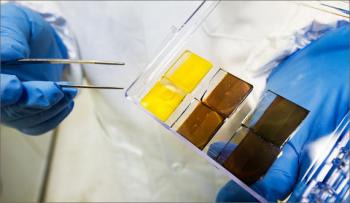Perovskite crystals to enable creation of tandem solar cells
Researchers at the Swiss materials science and technology research institute, Empa, have discovered a new way to produce thin film tandem solar cells using perovskite crystals. This discovery is a major milestone on the path to produce high-efficiency solar cells with low cost procedures.

In tandem solar cells, energy is harvested in two stages, which results in the conversion of sunlight into electricity becoming much more efficient. The top cell is semi-transparent and allows efficient conversion of large energy photons into electricity and the bottom cell converts the remaining transmitted low energy photons in an optimum manner. The tandem solar cells provide 20.5% efficiency when converting light to electricity and the researchers said that this can be increased to 30%. Empa researchers have further emphasized that it has a lot of potential to provide better conversion of solar spectrum into electricity.








